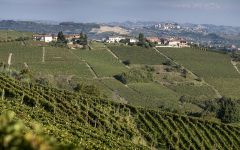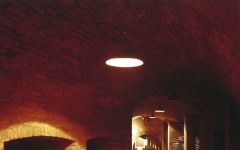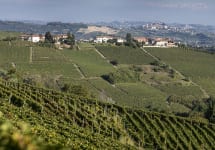Coppo Moncalvina Moscato d'Asti 2023
-
Wilfred
Wong



Product Details
Your Rating
Somm Note
Winemaker Notes
Straw colored yellow slightly tinted with greenish reflections. On the nose, floral notes along with peach and pear overtones. Fresh and aromatic on the palate.
A great match for cakes, cookies, and fruit-based desserts.
Professional Ratings
-
Wilfred Wong of Wine.com
COMMENTARY: The 2023 Coppo Moscato d'Asti is fresh, perfumed, and delightful. TASTING NOTES: This wine is lovely in the backyard with a friend and a bowl of fresh fruit. (Tasted: June 1, 2024, San Francisco, CA)
Other Vintages
2022-
Wilfred
Wong
-
Wine
Spectator




Just after the loss of their father Luigi in 1984, the brothers decided to focus on Barbera, releasing their own interpretation of this local grape. The prestigious Pomorosso was born, emerging as the model of the "Modern Style" Barbera, aged in oak and with unmistakable personality. Barbera, a truly native varietal, soon became the pride of the entire region.
The four brothers Piero, Gianni, Paolo and Roberto have set an ambitious goal: to resurrect the traditional red varietals from the Asti region, and to produce serious white wines with aging potential. This is a new generation of winegrowers with a new way of viewing agriculture. Although they are considered to be "Barbera specialists", they also produce an outstanding Moscato d'Asti and an excellent Gavi.

While Muscat comes in a wide range of styles from dry to sweet, still to sparkling and even fortified, it's safe to say it is always alluringly aromatic and delightful. The two most important versions are the noble, Muscat Blanc à Petits Grains, making wines of considerable quality and Muscat of Alexandria, thought to be a progeny of the former. Somm Secret—Pliny the Elder wrote in the 13th century of a sweet, perfumed grape variety so attractive to bees that he referred to it as uva apiana, or “grape of the bees.” Most likely, he was describing Muscat.

Recognized as the source of the best Barbera in all of Italy, Asti is a province (as well as major city) in Piedmont, consisting of a gentle, rolling landscape with vineyards, farmland and forests alternating throughout.
Barbera d’Asti can be made in an array of styles from relatively straightforward, fruity and ready for consumption early, to the more concentrated, oak aged version with an ability to cellar impressively for 10-15 years and beyond. Some of the very best sites for Barbera in Asti are concentrated in the subzone of Nizza Monferrato. Other red varieties grown here include Freisa, Grignolino and Dolcetto, which can be bottled varietally or blended into Barbera.
Historically consumers commonly associated the Asti region with Asti Spumante and Moscato d’Asti, both playful, aromatic, sparkling wines made from the Muscat grape. Asti Spumante is less sweet, fully fizzy and more alcoholic (yet still clocking in at only around 9% alcohol) while Moscato d’Asti is sweeter, gently sparkling (“frizzante”) and closer to 5 or 6% alcohol. Each is produced in stainless steel tanks to preserve the fresh and fruity flavors of the grape, often including peach, apricot, lychee and rose petal. Asti is also the spot for the pink-hued Brachetto d'Acqui, a slightly sparkling wine ready to charm with its raspberry and rose flavors and aromas.
